Rice is a staple food in many countries and cultures around the world. Rice is the seed of the grass species Oryza sativa or Oryza glaberrima, and is one of the most important agricultural crops in the world besides corn and sugarcane. Wild rice most often refers to a mixture of rice grains native to North America and China which are closely related to the two main species of rice but are actually considered a grain.
In this post, we'll teach you an easy way how to cook basmati rice at home.
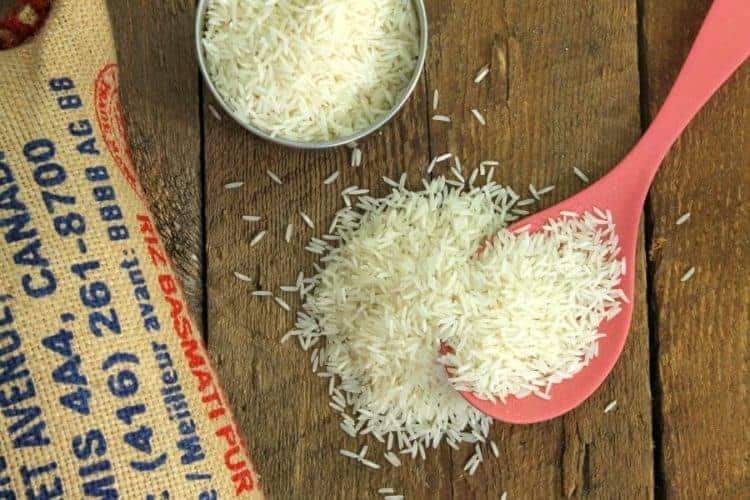
Featured in: Christmas Day Dinner Ideas.
Oryza Sativa the most commonly grown variety, is also known as English rice and was first domesticated in Asia. It has two sub-species, a short grain species known as japonica rice, and a long grain species, known as indica rice. Of course in these two sub-species, there is a multitude of different varieties being grown.
Basmati rice belongs to the later family, (long grain or indica rice) and has been grown in the Indian sub-continent for centuries. An important part of Persian and Middle Eastern Cuisine, Basmati rice is delicate, slightly nutty in flavor, and very easy to cook at home making it an excellent rice for beginner cooks to master!
This post contains affiliate links for which I may be compensated if a purchase is made through the links provided. For more information please read my affiliate disclosure.
Is White Rice Healthy?
Despite many people thinking white rice is an unhealthy option loaded with empty carbs, there are a few important things to consider when asking the question: is rice a healthy food for me to eat?
For one, rice has been consumed by many cultures around the world for centuries, so any rice can't really be 'that bad' for you if eaten in moderation. That being said, the way rice is grown and processed has also changed over the years, and as such it is important to know where your rice comes from and how it has been processed.
Katie from Wellness Mama explains the differences between brown rice and white rice, and which rice she prefers to eat at home. Teaser Alert: It's White Rice! Rice is also naturally gluten free making it a great carbohydrate for people with celiac disease or those trying to avoid other inflammatory grains.
To sum up Katie's comparison of white and brown rice, white rice has had the hull, germ, and bran removed, leaving only the very core, (or endosperm) of the grain intact.
Brown rice has only the hull removed, which leaves the bran and germ intact. Because brown rice is less processed and still retains its bran and germ, it is also higher in nutrients than white rice. Brown rice has more naturally present macro-nutrients and vitamins and minerals, (such as vitamins B, E, and iron) than white rice.
On the flip side, brown rice contains phytic acid which makes it harder for the body to naturally absorb these nutrients. In recent years there have also been studies suggesting that the higher levels of arsenic in brown rice make white rice a healthier option. Rice imported from other countries has been shown to have lower arsenic levels, and rinsing it before cooking can further reduce the arsenic content. This makes Basmati Rice and Jasmine Rice very popular white rice options.
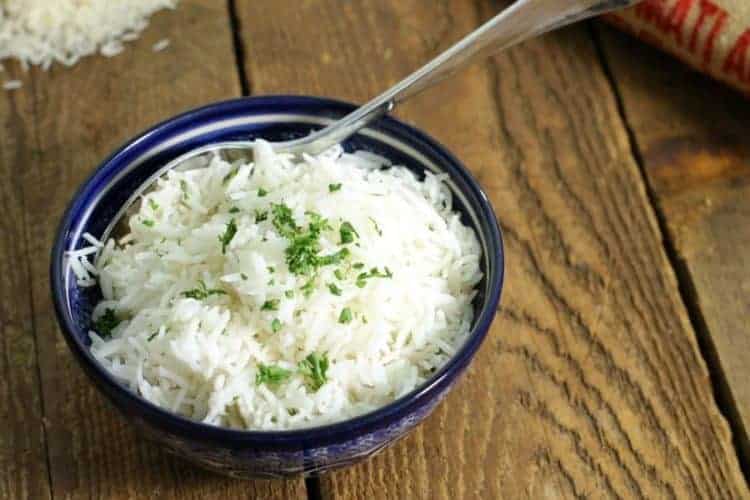
Whichever you do choose to include in your diet, cooking and eating any kind of rice at home as part of a healthy from scratch diet, (with lots of vegetables and organic meats) will be healthier than any processed food you can buy. Basmati is the favorite variety in our home as it is easy to cook and has a mild flavor, making it a great multipurpose side dish. Basmati rice makes a great side with this Pan Fried Haddock or simple Beef Korma!
How To Cook Basmati Rice On The Stove
As I mentioned above rice has been consumed by humans for centuries, and surprisingly the basic method for cooking rice from scratch with just a pot and a heat source has hardly changed.
Ingredients
To cook basmati rice at home start with:
- 1 cup Basmati Rice
- 1 ⅔ cups of water or chicken stock/broth
- 1 bay leaf
If cooking basmati rice with broth, note that if the broth or stock is very gelatinous, the rice will naturally become more sticky after cooking.
- Chef Markus Mueller
Instructions
- Start by boiling the water or broth. Water is of course the traditional medium used when cooking rice, but using broth is a great way to add extra nutrients and flavor to the cooked basmati rice. I most often use homemade chicken broth, but beef or vegetable stock can be just as easily used.
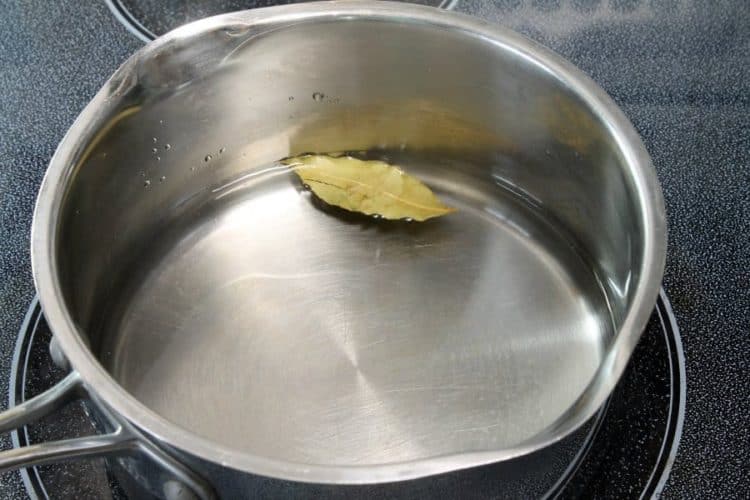
- Rinse the basmati rice in a sieve under running water. The water does not have to run completely clear, but you do want to give it a good wash. This removes excess starch and ensures the rice will not be sticky and clumpy after cooking. Let it drain well.
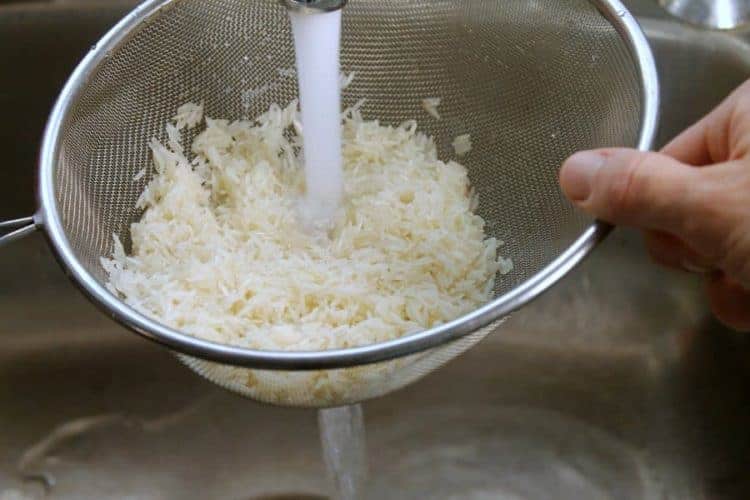
- Add the rinsed rice to the boiling water or broth. Immediately turn down the heat to a simmer and give the pot a stir to prevent the rice from sticking to the bottom of the pot. Cover the pot with a tight fitting lid, and turn the heat down further to low. Let the basmati rice cook for 15 minutes undisturbed.
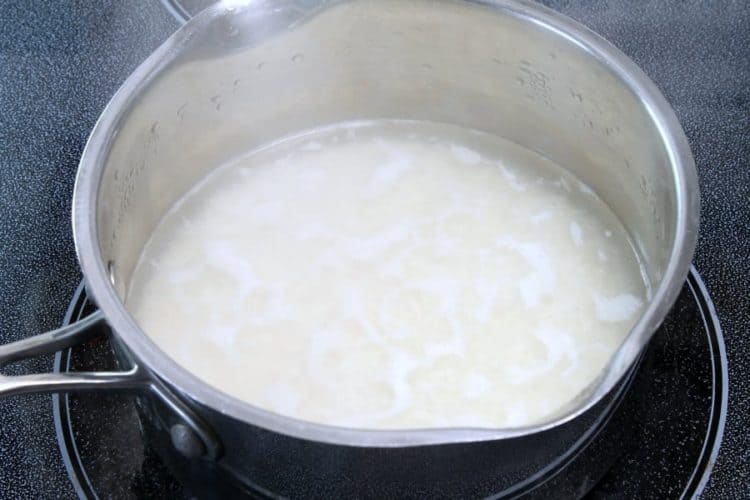
- Once the 15 minutes are up, remove the pot of rice from the stove, and let it sit for 3 to 4 minutes. The rice will finish cooking and absorb any moisture which is still present.
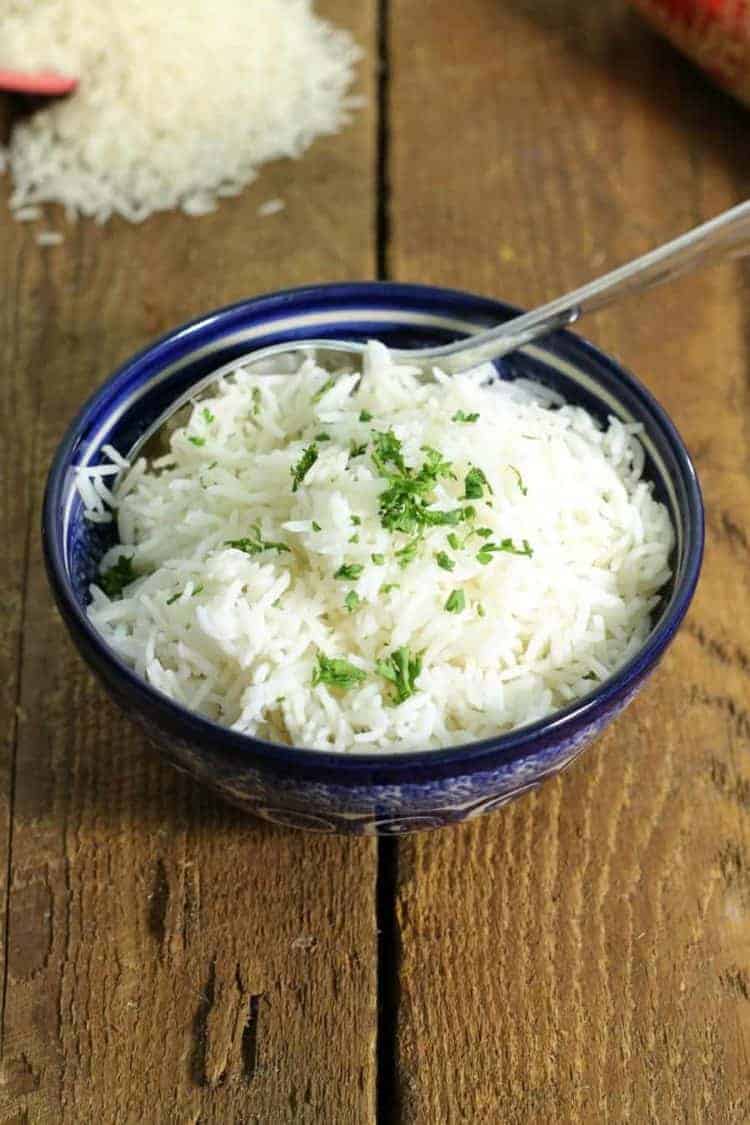
- Remove the lid and fluff the cooked basmati rice with a fork. Serve immediately.
Why Not Just Cook Rice In An Instant Pot Or Other Specialty Appliance?
Of course, there are fancy appliances available such as specialty rice cookers and more recently the Instant Pot which will cook 'perfect rice' every time.
The downside to these appliances of course is that they first need to come to temperature before the 'cooking time' begins, essentially eliminating the 'saved' time and they are usually not as easy to clean as a simple pot. Cooking basmati rice in an Instant Pot for example takes 4 minutes of cooking time. What they don't tell you is that it takes about 5 minutes to first heat up and then you need to let the pot sit for 10 minutes after the timer has finished. All of a sudden rice takes 20 minutes to cook again!
Cooking wild rice in an Instant pot as well as other grains though does prove advantageous, as the normally 45 minute long cooking time for these grains is easily cut in half.
Meals to serve with basmati rice
Basmati rice makes a great side with:
Made the recipe? Comment & Rate it below, then take a picture and tag me on Facebook. For more from scratch recipes, follow me on Facebook & Pinterest.
Recipe
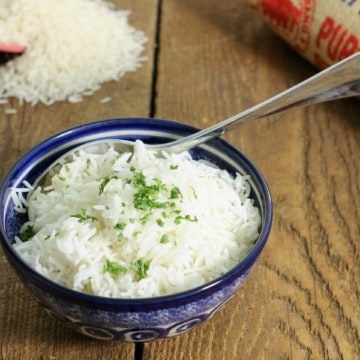
How To Cook Basmati Rice At Home
Ingredients
- 1 cup basmati rice
- 1 ⅔ cups of water or broth
Instructions
- Boil water or broth on the stove.
- Rinse the basmati rice under running water to remove excess starch. Let drain.
- Add the rinsed rice to the boiling pot and reduce the heat to a simmer. Stir once, then cover with a tight fitting lid.
- Turn the heat down further to 'low', and let the basmati rice cook for 15 minutes.
- Remove the rice from the stove, and let sit for 3 to 4 minutes to steam.
- Remove the lid and fluff the rice with a fork.
- Serve immediately.
Notes
Nutrition
Nutrition info is auto-generated. This information is an estimate; if you are on a special diet, please use your own calculations.
This post contains affiliate links for which I may be compensated if a purchase is made through the links provided. For more information please read my affiliate disclosure.

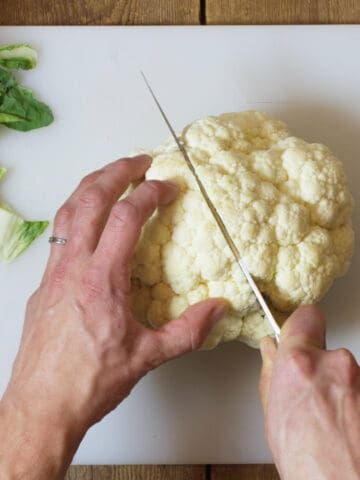
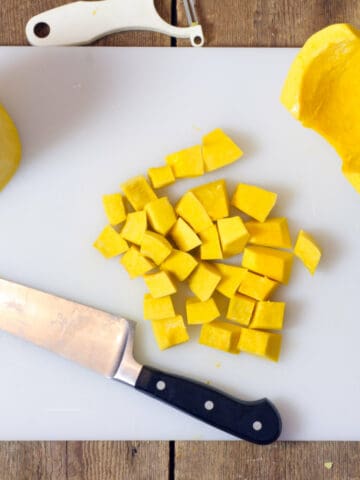
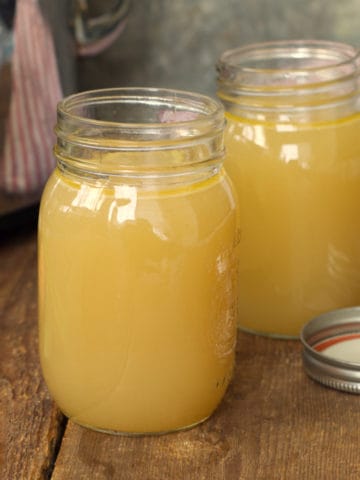
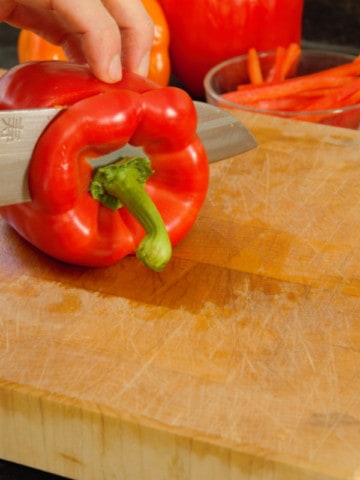
Karen Ahmed
Great post! I make Basmati at home all the time and it was still a very interesting read! You can also try adding some oil and/or lemon juice to your rice and it will help keep the grains from sticking. Basmati cooked in stock is also called a Pulao.
Markus Mueller
Adding lemon juice to keep the rice from sticking is a new one for me! I also didn't know using broth instead of water gives the dish it's own name! Thanks for the tips. Do you mind if I quote you in the text above?